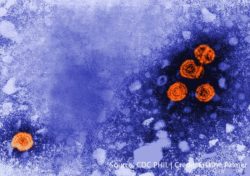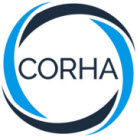Resources and Products
Explore topics by clicking on one of the bubbles below.
- Bloodborne Pathogens
- Burkholderia cepacia
- Candida auris (C.auris)
- Carbapenem-Resistant Enterobacterales (CRE)
- Clostridioides difficile (C.diff)
- COVID-19
- Data Management
- Dialysis Settings
- Drug Diversion
- Ebola
- Environmental Fungi (Molds)
- Epidemic Keratoconjunctivitis (EKC)
- Group A Streptococcus (GAS)
- Influenza
- Injections
- Legionella
- Measles
- Medical Products
- Mpox
- Nontuberculous Mycobacteria (NTM)
- Norovirus
- Patient Notification
- Scabies
- Spotlight Series
- Toolkits
- Viral Hepatitis
- Water Associated Organisms

Bloodborne Pathogens
Bloodborne pathogens are spread through contamination with blood or other body fluid from an infected person. In a healthcare setting, this contact is primarily through contaminated needles, syringes, or other sharp instruments. Common bloodborne pathogens associated with healthcare transmission include hepatitis B virus (HBV), hepatitis C virus (HCV) and, to a lesser degree, HIV. A single case of any of these pathogens presenting as a possible consequence of a healthcare exposure usually warrants prompt and thorough investigation.
Featured Resources:
Resources for the investigation of healthcare-associated infections with HBV, HCV or other bloodborne pathogens include:
- CDC Viral Hepatitis Healthcare Investigation Guide. This guide includes a summary of suggested steps and a Sample Questionnaire for cases of recent/new hepatitis B or C virus infection to help guide health departments in identifying potential healthcare exposures
- Information on assessing and promoting safe injection practices is provided on the CDC Injection Safety and Safe Injection Practices Coalition (SIPC) websites
- The CDC Drug Diversion Website and CSTE Drug Diversion Toolkit provide useful background and guidance for investigating infections (such as HCV), stemming from drug diversion activities that involved healthcare providers who tampered with injectable drugs
Additional Resources:
- U.S. Outbreak investigations involving healthcare-associated HBV and HCV were summarized in this open access journal article which includes examples involving unsafe injections, dialysis and diabetes care
- CORHA Dialysis and Drug Diversion topic pages
- FDA provides suggestions for safe disposal of sharps, including in home settings, on its Safely Using Sharps page. They provide additional information on disposal in home settings here.
- OSHA provides strategies to prevent occupational needlestick injuries on its Bloodborne Pathogens and Needlestick Prevention page.
- Suggested next steps following a needlestick or sharps injury can be found on CDC's Bloodborne Infectious Diseases page.
CORHA Principles and Practices for Healthcare Outbreak Response
